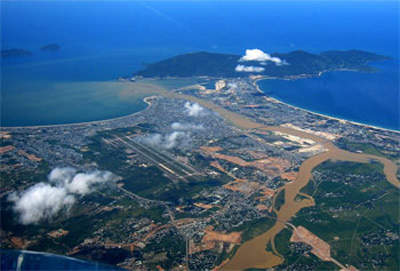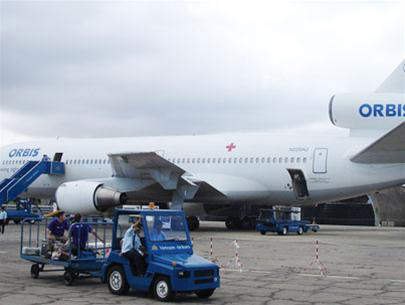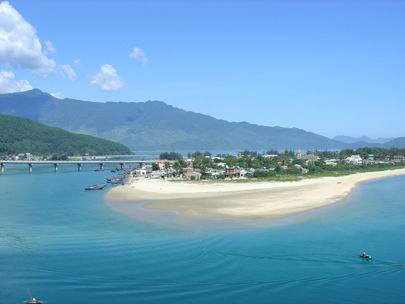Danang International Airport is the principal airport serving Danang City in the centre of Vietnam. The airport was originally built by the French in 1940 and then expanded by US forces during the Vietnam War. The airport is sited about 3.2km from the city centre and is accessed via a four-lane road (due for refurbishment and upgrading).
The airport currently serves both civil and military operations, although military activities are now extremely limited. The airport has two 3,048m (10,000ft) × 45m parallel runways (17-35 orientation) capable of handling large, modern aircraft such as B747s, B767s and A320s. There are plans to extend one of the runways to 3,500m length.
In addition to the domestic services offered, there are also weekly flights to Bangkok, Singapore, Taipei and Siem Reap. The airport also plans to offer flights in the near future to Hong Kong, Japan and South Korea.
The airport has a single passenger terminal. Traffic volume averages from 100 to 150 flights every 24 hours.
In 2000, the estimated number of passengers was 0.75 million. In 2006, the airport received one million passengers for the first time since 1975, creating growth estimates of four million passengers by 2020.There is significant economic growth in the region (tourism and business) which makes the expansion of the airport a crucial factor.
Danang expansion project
Vietnam is one of the world’s fastest-growing economies, with increasing tourist arrivals attracting significant foreign investment.
With Danang International Airport crucial to the development of the central region of Vietnam, the government has unveiled plans to construct a new international terminal capable of handling six million passengers per year.
The feasibility study for the project, which was partially sponsored by the US Trade and Development Agency, was completed by PriceWaterhouseCoopers in 2006. The first phase of the project is estimated to cost $75m and will initially increase passenger capacity to four million per year.
The project’s completion date is set for 2010-2011 and will require a total investment of $160m.
The project’s completion date was set for 2010-2011 and would require a total investment of $160m. The work was however delayed and the terminal is now expected to be completed by the end of 2011. The terminal will have five boarding gates, baggage handling and screening equipment, departure and arrival areas, fire detection systems, flight information display system and so on.
Expansion funding
The Civil Aviation Administration of Vietnam (CAAV) and the Middle Airport Authority (MAA), which is responsible for managing the airport, obtained government funding approval for the terminal project in 2006.
About $48m of the total investment for the first phase will be funded from the government budget and will be spent mainly on construction work.
The remaining $27m is expected to come from local or foreign commercial banks and will be used to acquire the necessary equipment for the outfitting of the new terminal.
The CAAV and MAA have also considered building a new runway at an estimated cost of $32m, but financing for this project has not yet been established.
Contractors
In May 2006, the MAA hired an international consortium to provide design and consultancy for building the new terminal. MAA signed a $2.57m deal with a joint venture between Louis Berger Group Inc of the US, Airport Consultants BV of the Netherlands and Vietnam-based National Construction Consultants Co.
The consortium design was completed by November 2006 and was submitted for approval. The expansion of the airport with the new terminal will begin construction in 2008.
In February 2008, Wilbur Smith Associates was appointed as head of a consortium to build the new terminal at Danang. The other members will include ADPi and ADCC of Vietnam.
The project involved construction of a new 20,000m terminal building (fully piled foundation) with five boarding gates, baggage handling systems, departure and arrivals areas, FIDS (flight information display system), CUTE (common user terminal equipment), fire detection systems and comprehensive public address and security systems (including screening equipment). Wilbur Smith will project manage all aspects of the project from construction to equipment procurement (international suppliers) and installation.






